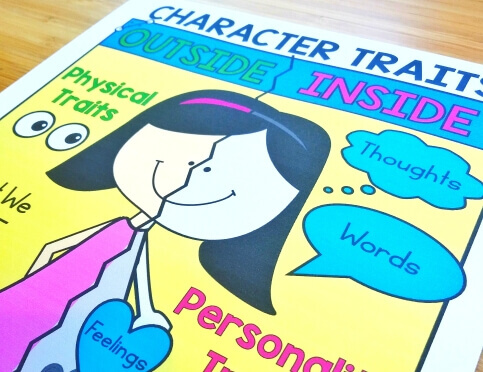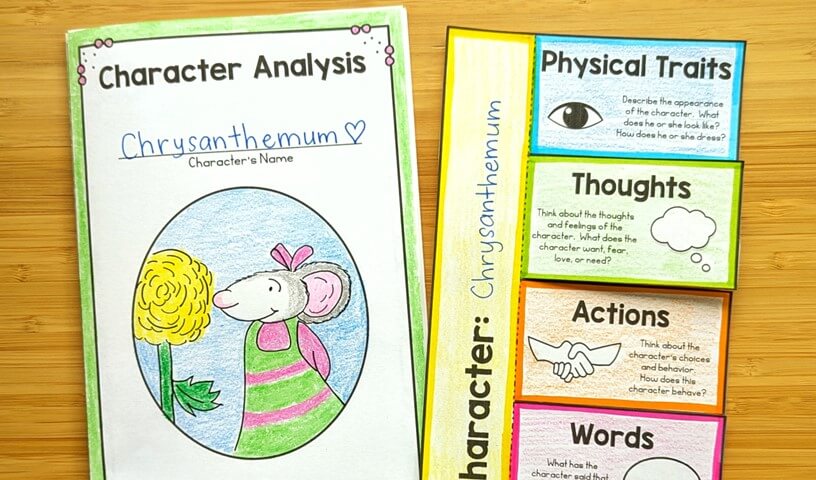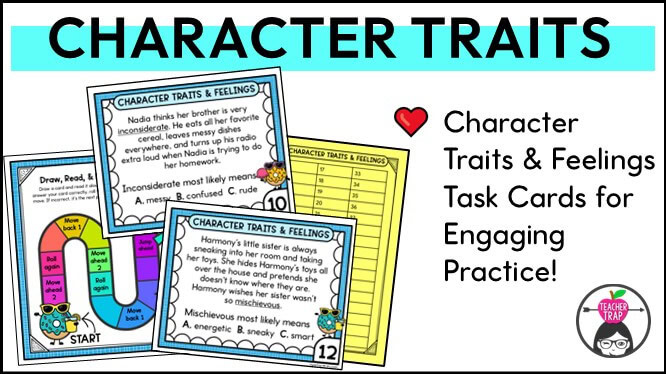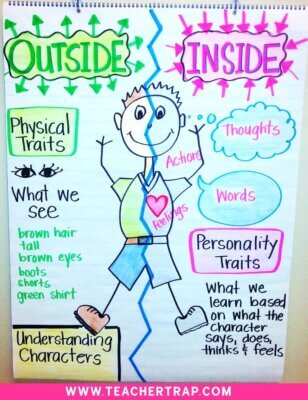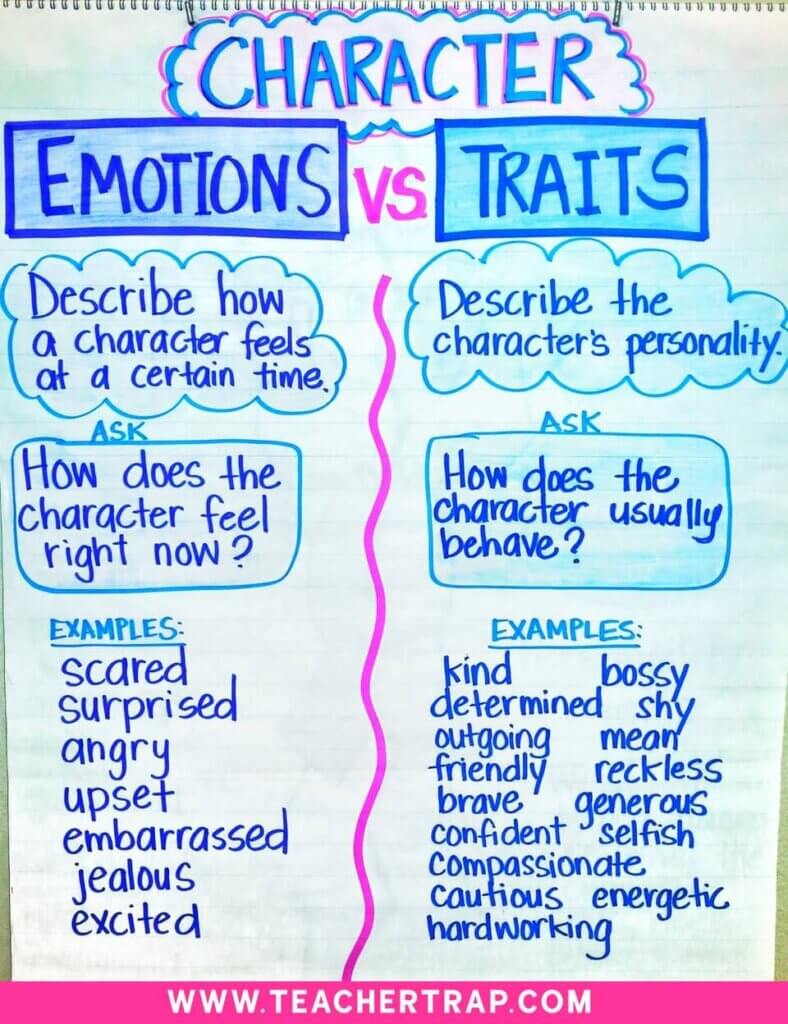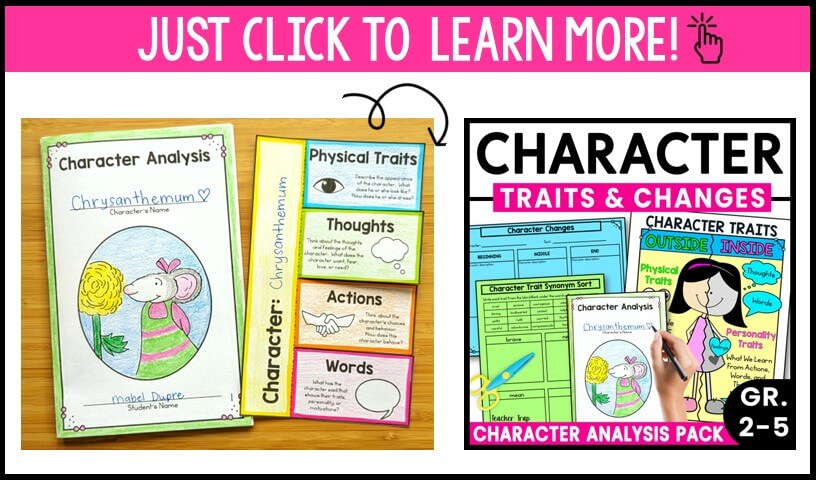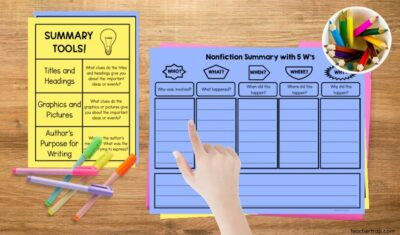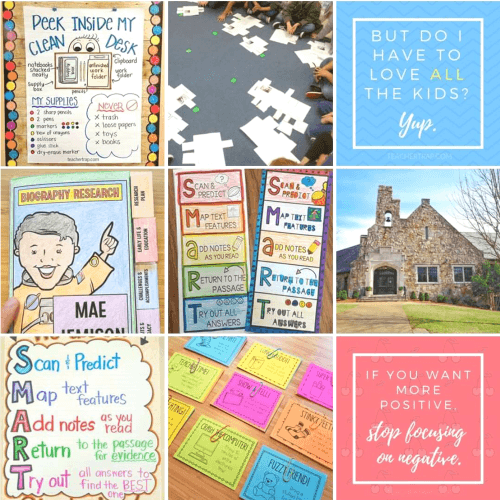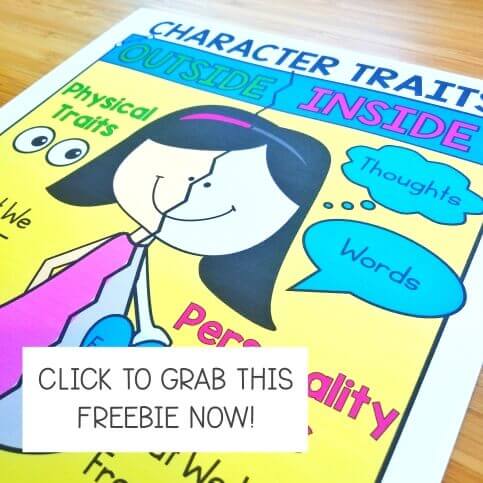Understanding characters is an essential reading comprehension skill that many students find challenging. To master this tricky skill, you’ll want to teach character traits and changes by breaking down the concepts into manageable parts that help students learn to infer character traits from text evidence and describe character changes over time.

Why is Teaching Character Traits and Changes So Tricky?
Students must combine a variety of comprehension skills to make sense of characters. They need background knowledge of traits and what they look or sound like, an understanding of new and complex vocabulary, and the ability to use text evidence to infer character traits based on words and actions. If one area is lacking, students will struggle.
In my Character Traits Pack on TPT, I include multiple activities for addressing each of these areas. Read on to learn my favorite strategies for character analysis!
Focus on Character Traits Vocabulary
Most kids know common character traits like kind, friendly, and honest, but many lack the vocabulary for more complex traits like timid, loyal, and generous, or even malicious, gullible, or intimidating. The first step in helping students master character traits and changes is to build up their vocabulary.
Start by charting common terms, but look for opportunities to add more complex and interesting words as they come up in classroom reading. Once you have a good list, spend time playing around with the new words. You might describe a character and have students choose the word that best describes that behavior, or even have students choose a known character from a movie and work with a partner to choose matching character traits.
How would you describe Hagrid from Harry Potter? What character traits best describe The Grinch?
Another great way to boost vocabulary is to give students practice using context clues to determine the meaning of a word, and then matching that word with other synonyms.
For example, most students know the word kind, but do they know the words compassionate, considerate, and gracious? Create lists of similar words and discuss the slight differences in meaning. I also use Character Traits Task Cards to give students extra practice in determining the trait that describes the behavior.
Reading biographies or conducting biography research also offers wonderful opportunities to discuss character traits and changes, and is great for integrating social studies and reading!
Teach Outside Vs Inside Traits
Many students confuse physical traits with personality traits (external vs internal). It’s important to teach that we identify physical traits by using our eyes and describing how the character looks on the outside, while we determine personality traits by noticing the character’s thoughts, feelings, words, and actions over time. To recognize character traits and changes, we must use all the clues to draw conclusions about the character’s personality and track how they change after different events.
Explain Emotions Vs Character Traits
If a character feels sad in a story, that doesn’t necessarily mean the character has a gloomy or hopeless personality. When working on character traits and changes, students must understand the difference between short-lived emotions and long-term personality traits. This can be as simple as asking, “Are they often this way or just this once?” Help students see that repeated emotional responses are often clues for character traits.
Discuss Character Traits and Changes with Sentence Stems
Noticing how characters change over time takes repeated practice and lots of discussion. Students must learn to use the text evidence to determine both the change and why it happened. Sentence stems can hold students accountable for thinking through their ideas and expressing them clearly.
In the beginning, I would describe (character) as (trait) because (text evidence).
In the end, I would describe (character) as (trait) because (text evidence).
(Character) most likely changed this way because (describe important event).
In my Character Traits Pack, I’ve included flexible options for easy character study and describing changes over time.
Use Short Picture Books for Big Impact
Even in upper elementary, short picture books work magically for powerful comprehension lessons. Students are engaged in the story for its humor or emotion, and can practice naming character traits and changes, along with evidence. Below are some of my favorite picture books for teaching character traits, plus a Junie B. Jones chapter book because it works so well!
>>>This post contains affiliate links. If you follow one of these links and make a purchase, I may receive a small commission. There is absolutely no obligation to purchase through these links but please know that when you do, you are helping to support this blog.
Chrysanthemum by Kevin Henkes
The Bad Seed by Jory John
Amazing Grace by Mary Hoffman
The Recess Queen by O’Neill and Huliska-Beith






